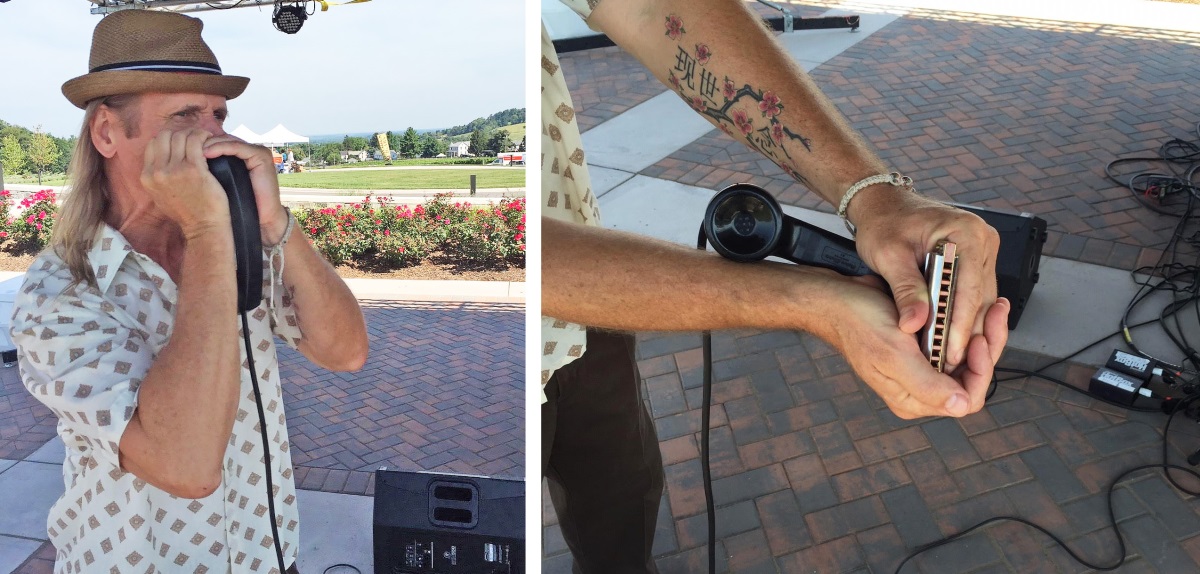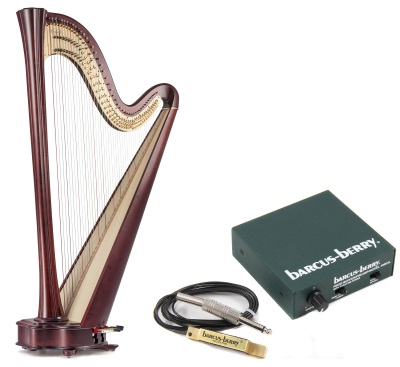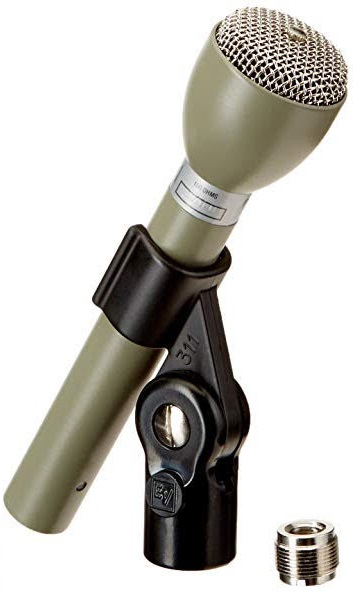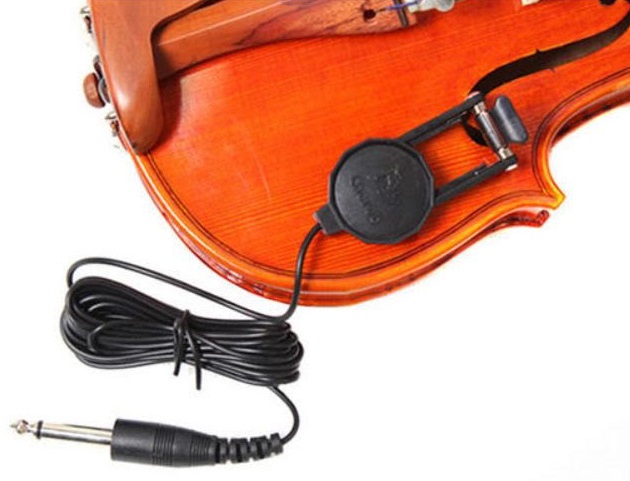Some may consider me a microphone snob – I’ve been collecting and using mics for five decades and counting. While all sorts of other gear such as amplifiers, loudspeakers and mixing consoles occasionally catch my fancy, nothing stands the test of time like mics.
After all, you can pull out a great RCA 77DX ribbon mic from the 1950s to capture the sound of a trumpet in a studio and the mic groupies will crawl out of the woodwork to see and hear what you’re doing. With that context, I’m going to detail some of my most favorite mics and miking techniques, starting at the present and working my way back in time.
Staples Of The Kit
Currently there are three “go-to” mics that I deploy at nearly every show: Shure SM58 and BETA 87A, and AKG 535. The SM58 (and cousin SM57) are useful on so many stage instruments and vocals that I always carry half a dozen of each.
Of course, the 58 is great on male vocals and simply impossible to overload, but it’s also useful on baritone saxophone, bongos, accordion, harmonica, and just about any other instrument with most of its important sound in the middle frequencies. The 57 is my standard on snares, electric guitar cabs (with Celestion speakers being my favorite), lap steel through a vintage 5-watt Fender Princeton, and any other instrument that can use a little 5 kHz boost to make it stand out the mix with a bit more presence.
I’ve often said that if I had a bucket of 58s and 57s that I can do most any show, and it’s the truth. But mics are like ice cream flavors, and while the 58/57 combo is like really good vanilla, sometimes you want pistachio or Rocky Road.
The AKG 535 (C535 EB, discontinued but it can still be tracked down online) is my pistachio, and I carry eight of them to every show. It’s probably my favorite mic on female vocals (but I worked a show once where Sting used it perfectly), and it’s the most flexible mic in my kit for festivals. It’s a condenser with an onboard pad (for screaming vocals) as well as 2-position bass roll-off, and is perfect on outdoor stages due to a great windscreen.
I’ve used it dozens of times on acoustic guitar, mandolin, overhead drums, hi-hat, flute, grand piano, and just about any other instrument that has extended high frequencies. It even works great on choir – I rented all eight of my 535s out to handle choirs for a visit by the Pope to Washington, D.C. a few years ago.
The BETA 87A is my favorite capsule on wireless handheld mics. To me, the advantage of the 87A is its tight supercardioid pattern, so when one is soloed on a loud stage, there’s very little bleed from the other instruments. That is, you’ll hear mostly the vocalist on that mic and must less sound from the screaming guitar cabinet.
I have a pair of hard-wired 87As in my kit, used for lead vocals, especially in praise teams where I want the lead voice to stand out differently than the backup singers. So I put an 87A (or 535) on the praise team leader, and 58s on the rest of the singers. Because these two classes of mics have such different sonic flavors (vanilla and pistachio), it’s really easy to get the backup singers to blend together with the lead vocals sitting on top of the mix.
I tell my students all the time that by selecting the proper mics for each stage instrument or vocalist, 90 percent of my mixing work is already done. I just tweak the EQ a bit, set the dynamics and levels, and then I can sit back to enjoy the ear candy.
Effective Old Tech
With those basics out of the way, let’s visit some of the stranger mics and techniques I’ve employed – some of these quite recently – that might cause you rethink how mics can be used.
Enter the telephone mic (seriously). I first saw one of these in the late 1960s while playing a country gig for Billy Dean and the Thunderbirds at a chicken-wire bar in the middle of nowhere. The bar owner’s advice was to keep playing when a fight broke out on the dance floor since the crowd generally didn’t throw beer bottles at the band as long as the band kept playing. And yes, there was actual chicken wire fence in front of the stage in case a stray bottle came our way.
Anyway, what caught my eye at this gig was the harmonica player using a telephone handset for his harp. Yup, just like one on an old dial-up phone. The decades have clouded my mind a bit and perhaps I imagined just imagined it, but then last year I was doing sound at a bluegrass festival and the harmonica player showed up with a – you guessed it – (now quite old) telephone headset for a mic. (So I’m not crazy and have pictures to prove it.)

Not only did this artist use the receiver/earpiece of a vintage Bell telephone, he plugged it into a modern build of a Fender 5-watt Princeton guitar amp. This was one of the most authentic sounding harp setups I’ve even experienced on a live stage, with the telephone earpiece providing the right high and low frequency cutoffs with the proper amount of squawk.
If you don’t want to roll your own harmonica mic, Shure makes a new version of its bullet mic (520DX) that’s also a favorite of harmonica players. This one includes a volume pot right where you can roll it up and down with the edge of your hand. Another sweet setup.
Noting Similarities
Now let’s mosey on over to another type of harp, this one being a classic string harp often seen in orchestras, as well as its smaller cousin the minstrel harp that’s often heard providing background music at weddings and high-end restaurants.
While it’s certainly possible to use a condenser mic on a harp, there’s usually a lot of other sound swirling around on stage so it’s difficult to get an isolated sound field. A winning solution is the Barcus-Berry piano pickup.
The company first sent me a unit a few decades ago, and I promptly used it on a variety of pianos with great success. In fact, we used a pair of them on a 9-foot concert grand for a live show with Ray Charles, mostly for the stage monitor feeds since they have excellent gain before feedback. They were blended with the input of a pair of AKG 414s in the house mix.
A bit later, for an outdoor gig with the Maryland Symphony Orchestra, I needed to mic the concert harp, which just happened to be next to the percussion section – there was no way that a conventional mic was going to pick up the harp and ignore the snare drum. Looking at the harp, I got to thinking that it’s built like a piano but without the hammers, and it also has a resonant chamber like a guitar with a sound hole big enough to reach a hand inside.

So with the harpist’s consent I stuck the pickup for the Barcus-Berry piano mic inside of the harp’s sound chamber with double-sticky tape and carefully threaded the wire out of the hole. And it worked great. I could get enough gain before feedback that the harp could easily be mixed with the rest of the orchestra, and with almost no cross-bleed from the other close instruments.
Interestingly, after I wrote an article about this off-beat technique for another publication, Barcus-Berry came out with the “Harp” version of this contact mic. I called and asked them the difference between the harp and piano models, and they said only the silkscreen on the front that said either “piano” or “harp.” Everything else was identical. After they read my article they realized it was also a great harp pickup and added that to the marketing.
Necessity & Invention
Now let’s go back a little further in time before there were contact pickup/mics for the stand-up bass. When I was doing sound for a bunch of bluegrass artists (including Bill Monroe, the king of bluegrass), one trick I learned was to take an Electro-Voice PL5 omni mic, wrap it in a little packing foam, and slip it head up under the tailpiece of the stand-up bass.
This is super easy to implement, the bassist can move around without getting out of a mic pattern, and it’s one less stand on stage. Omni mics aren’t terribly useful for a lot of live gigs, but it’s great to keep one on hand just in case.

Here’s another cool trick when there’s a limited number of mixing channels and there’s drum kit on stage, especially if it’s in a cage: mount an omni on a little drum clamp so it’s positioned straight up on the front of the snare, with the tip about 4 to 5 inches above the head. It will be sitting in the little pocket between the snare and rack toms. Now place the kick drum mic of your choice.
Note that this doesn’t offer the ability of adjust the levels of the kit, put gates on the snare or toms, or even do a stereo pan around the room, but it’s saved my show a few times nonetheless. I’ve done it with a B&K 4007 omni and it sounded stunning, but I’ve also used a much more affordable Audix RTA calibration mic, a really flat omni, and that worked great as well.
More than once I’ve also “buried” an omni condenser mic in the middle of the “toys” section of a drum set. (This is where they put their wood blocks, cowbells, chimes, and the other noisy things they love.)
Because this channel isn’t being fed to the stage monitors, the fact that it’s an omni doesn’t present a gain problem, and because they’re only inches away from loud cowbells and wood blocks also helps with the isolation problem.
Finally, here’s a handy tool to keep in the kit for the “emergency” fiddle – you know, the one that comes with the last-minute fill-in band at a festival. While a traditional overhead mic is one way to capture it, many players won’t stay on-mic, so try a Cherub WCP-60V.

This simple contact pickup mounts in the F-hole of the violin with a padded spring clamp, and it has a long cable with a 1/4-inch plug on the end. It’s a piezo element so it has very high impedance, strongly suggesting not plugging it into a passive DI box with a 100 k-ohm input impedance. Rather, use it with an active DI such as a Whirlwind HotBox with 1 to 5 meg input impedance.
Now here’s the best part. The WCP-60V is available on Amazon for about $5 with free shipping. Certainly it’s not in the league of a $500 Barcus-Berry unit, but with some minor mid-range EQ fixes it can sound pretty darn good. And if it gets broken, lost or stolen on a gig, I’m only out few bucks.
I hope you to try out some of these oddball mic techniques, and perhaps you’ll also be inspired to come up with a few of your own. Remember, all gigs start with the mics and pickups, so the better the sound that’s initially captured, the better the show will sound.




















